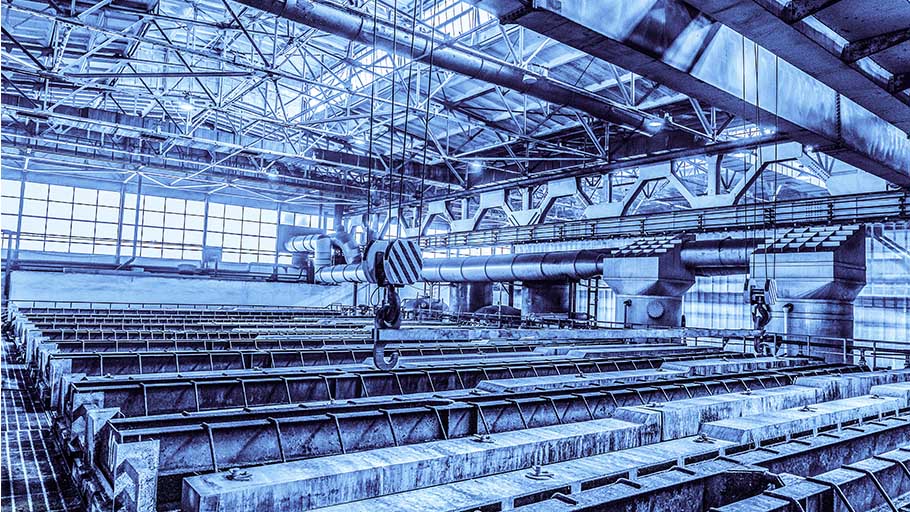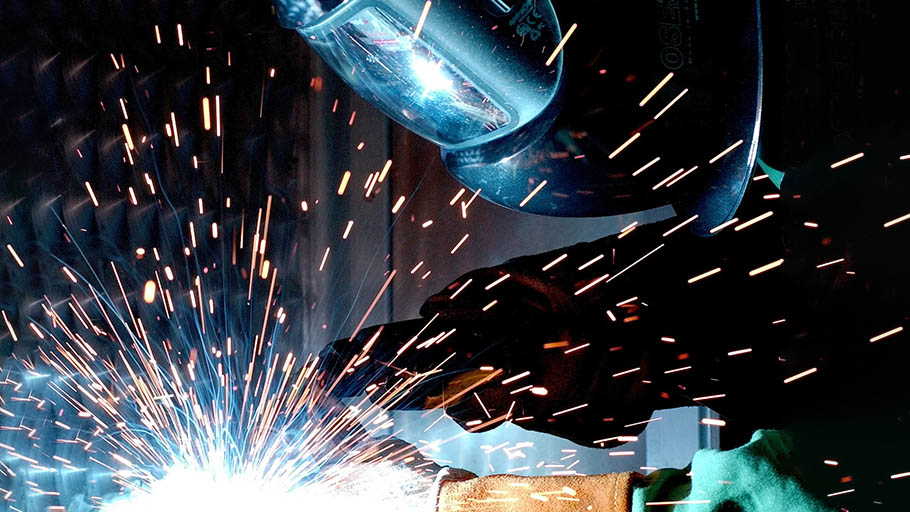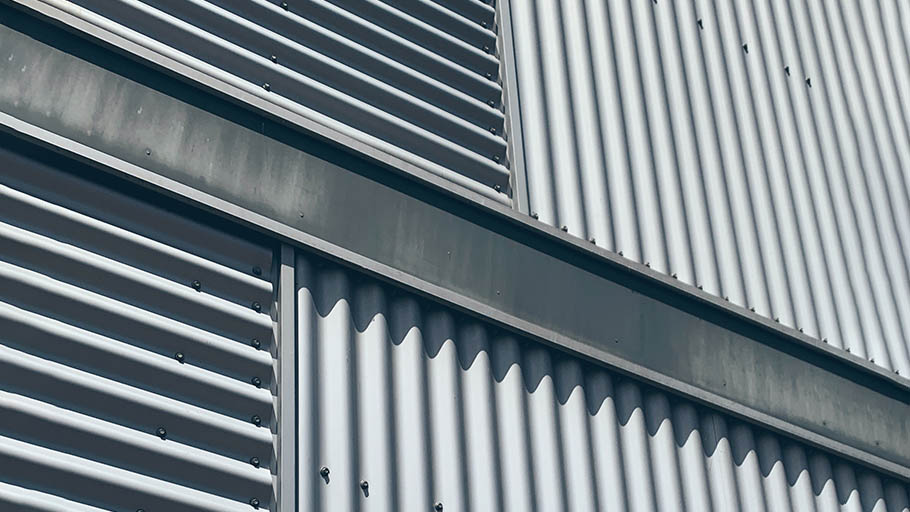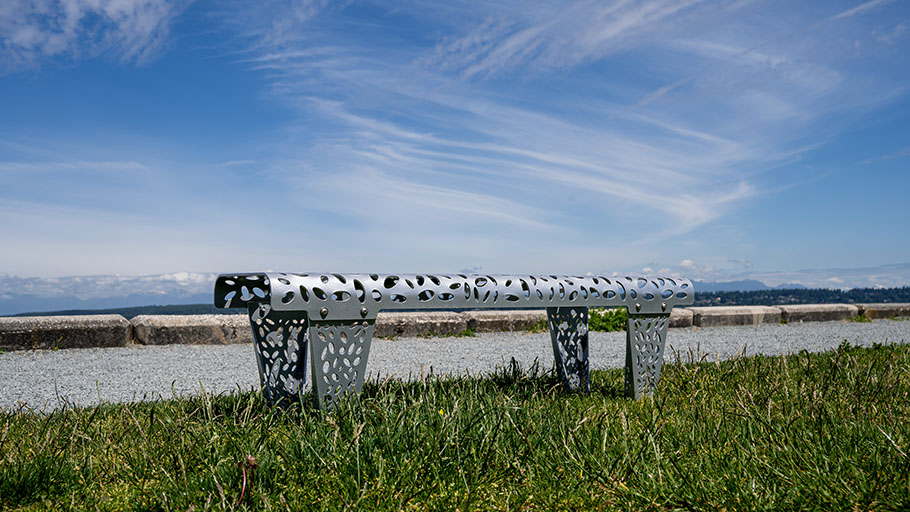The function behind the satin finish

Galvannealed steel is a standout in the vast world of steel grades and finishes. Characterized by its unique satin finish, galvannealed steel is the result of an innovative combination of galvanization and annealing. This process not only gives it a sleek, matte appearance but also imparts a host of functional benefits. These advantages have made galvannealed steel a top choice across various industries. In this article, we’ll delve deep into the intricacies of galvannealed steel, exploring its manufacturing process, key benefits, and the significance of the ASTM A653 standard.

What is Galvannealed Steel?
Galvannealed steel, also referred to as satin coat steel, is a type of sheet steel that goes through a dual process of galvanization and annealing.
By combining the protective attributes of galvanized steel with the superior characteristics of an iron-zinc alloy, galvannealed steel overcomes some of the limitations of traditional galvanization. The result is a satin matte finish on the steel’s surface, a distinct aesthetic suited for various outdoor applications from high-profile architectural buildings to everyday industrial and commercial locations.

How is Galvannealed Steel Made?
The production of galvannealed steel follows a two-step procedure involving two common steel treatments: galvanization and annealing. In the initial phase of galvanization, also called hot-dip galvanizing, the steel is immersed in a molten zinc bath, which applies a protective zinc coating on both sides of the sheet. The galvanizing bath is enriched with around 0.1% aluminum, which facilitates the bonding process between the zinc and iron elements. The zinc coating forms the basis of the subsequent galvannealed steel.
Following the galvanization process is the annealing process. The steel undergoes heat treatment within an annealing furnace while the zinc coating remains in its molten state. This heat treatment triggers a reaction where a portion of iron from the outer layers of the steel is drawn into the zinc coating, forming a zinc-iron alloy. This distinctive alloy coating not only provides the steel with the desired matte finish, but also forms the bedrock of its enhanced properties.

Advantages of Galvannealed Steel
Through its unique composition and processing, galvannealed steel delivers distinct advantages that enhance its performance, durability, and visual appeal. Some of the advantages that make galvannealed steel a preferred option in various industries and applications include the following:
- Rust-resistance: Galvannealed steel exhibits rust-resistance due to its unique zinc-iron alloy coating. The combination of zinc and iron creates a protective layer that mitigates the impact of environmental factors, thus enhancing the material’s longevity and durability.
- Reduced maintenance and replacement costs: The rust-resistant properties of galvannealed steel translate into substantial cost savings over time. By minimizing the risk of corrosion-induced damage, the need for frequent maintenance and premature replacements is significantly diminished.
- Improved paint adhesion: Galvannealed steel’s matte finish is pivotal in facilitating superior paint adhesion. This attribute is especially valuable in applications where a smooth and long-lasting paint finish is essential. The matte surface texture provides an optimal substrate for paint to securely bond to, resulting in enhanced aesthetic appeal.
- Enhanced weldability: As the galvannealed steel’s coating is not purely zinc, but rather an alloy of zinc and iron, it is easier to weld. The presence of iron in the coating composition makes it less susceptible to common issues, such as porosity and inclusions, which can occur when welding zinc.
- High formability: Galvannealed steel maintains its structural integrity during various forming, stamping, and bending operations. The combination of its robust coating and pliable properties ensures that the material can undergo these shaping processes without compromising its protective layer or structural stability. This exceptional formability makes galvannealed steel suitable for intricate designs and complex geometries, expanding its range of potential applications.
- Visual appeal: Beyond its functional benefits, the gray matte color of galvannealed steel has a uniform satin finish. This uniform appearance adds a sense of sophistication to the material, making it suitable for applications where aesthetics are important.
- Durability: The presence of iron in the alloy coating enhances the galvannealed steel’s hardness and resilience, making it more resistant to scratches, abrasion, and other forms of surface damage. This enhanced durability ensures that galvannealed steel maintains its integrity and appearance even high traffic or other demanding environments.
Galvannealed Steel vs. Galvanized and Stainless Steel
Many of galvannealed steel’s advantages align with the strengths of galvanized steel. However, galvannealed steel distinguishes itself from both galvanized and stainless steel in several key aspects.
In comparison to stainless steel, both galvannealed steel and galvanized steel can be used as cost-effective alternatives to protect against corrosion in less demanding environments. However, it is essential to note that neither galvanized steel nor galvannealed steel are optimal substitutes for stainless steel in applications involving cookware due to potential concerns related to zinc toxicity.
Galvanized steel can suffer from brittleness of the zinc coating. This characteristic can adversely affect formability, weldability, and the adhesion properties of paints or coatings. Galvannealed steel addresses these limitations with its alloyed coating. The annealing process used in the production of galvannealed steel creates an iron-zinc alloy that improves its welding capabilities in comparison to traditional galvanized steel. This attribute makes galvannealed steel particularly desirable in applications where maintaining material integrity through welding is important.
Moreover, galvannealed steel demonstrates superior formability when compared to galvanized steel due to its robust yet pliable coating. This characteristic ensures that the material retains its structural integrity during various shaping operations, such as forming, stamping, and bending, promoting longevity without concerns of flaking or chipping.
However, while the incorporation of a zinc-iron alloy coating in galvannealed steel provides a substantial level of corrosion resistance, it does not parallel that of galvanized steel.

The ASTM A653 Standard
The ASTM A653/A653M-20 standard is a comprehensive guideline that covers either zinc-coated (galvanized) or zinc-iron alloy-coated (galvannealed) steel sheets through the hot-dip process. The material under this standard is available in several designations, including commercial steel, forming steel, deep drawing steel, extra deep drawing steel, structural steel, high strength low alloy steel, and more. Each designation has specific mechanical properties, such as yield strength, elongation, and bending properties, which are tested rigorously.
One of the significant advantages of purchasing products that meet the ASTM A653 standard is the assurance of quality. The standard specifies both the chemical and mechanical properties of the galvannealed and galvanized steels, ensuring that they have the desired strength, ductility, and corrosion resistance. For instance, the G90 designation in the ASTM A653 standard indicates a specific weight of zinc coating, ensuring a certain level of corrosion resistance. This is especially crucial for products exposed to environmental elements, as the zinc coating acts as a barrier, protecting the steel from rust.
The standard’s emphasis on various designations, grades, and classes ensures compatibility with different application requirements. Whether it’s for general use or deep drawing, the ASTM A653 standard provides clear guidelines on the type of steel to be used, ensuring optimal performance and longevity of the product.

By combining galvanization with annealing, galvannealed steel offers a host of benefits, including enhanced paint adhesion, improved formability, and superior corrosion resistance. The ASTM A653 standard ensures the consistency and quality of galvannealed steel sheets, making them an asset across various sectors. As industries continue to seek durable, versatile, and high-performing materials, galvannealed steel proves its worth as a reliable and innovative solution.

